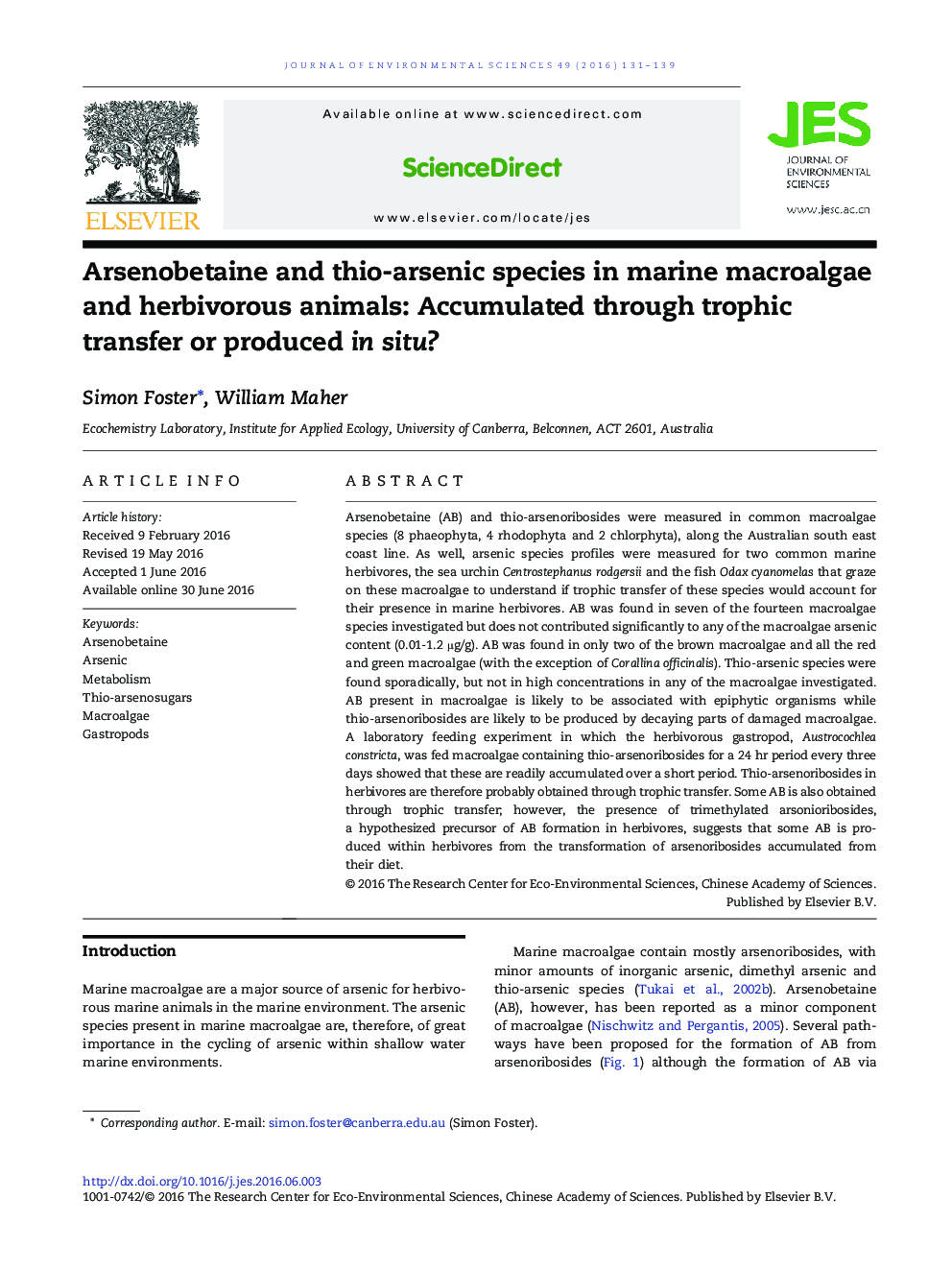| کد مقاله | کد نشریه | سال انتشار | مقاله انگلیسی | نسخه تمام متن |
|---|---|---|---|---|
| 5754173 | 1620804 | 2016 | 9 صفحه PDF | دانلود رایگان |

Arsenobetaine (AB) and thio-arsenoribosides were measured in common macroalgae species (8 phaeophyta, 4 rhodophyta and 2 chlorphyta), along the Australian south east coast line. As well, arsenic species profiles were measured for two common marine herbivores, the sea urchin Centrostephanus rodgersii and the fish Odax cyanomelas that graze on these macroalgae to understand if trophic transfer of these species would account for their presence in marine herbivores. AB was found in seven of the fourteen macroalgae species investigated but does not contributed significantly to any of the macroalgae arsenic content (0.01-1.2 μg/g). AB was found in only two of the brown macroalgae and all the red and green macroalgae (with the exception of Corallina officinalis). Thio-arsenic species were found sporadically, but not in high concentrations in any of the macroalgae investigated. AB present in macroalgae is likely to be associated with epiphytic organisms while thio-arsenoribosides are likely to be produced by decaying parts of damaged macroalgae. A laboratory feeding experiment in which the herbivorous gastropod, Austrocochlea constricta, was fed macroalgae containing thio-arsenoribosides for a 24 hr period every three days showed that these are readily accumulated over a short period. Thio-arsenoribosides in herbivores are therefore probably obtained through trophic transfer. Some AB is also obtained through trophic transfer; however, the presence of trimethylated arsonioribosides, a hypothesized precursor of AB formation in herbivores, suggests that some AB is produced within herbivores from the transformation of arsenoribosides accumulated from their diet.
with permission www.daveharasti.com174
Journal: Journal of Environmental Sciences - Volume 49, November 2016, Pages 131-139